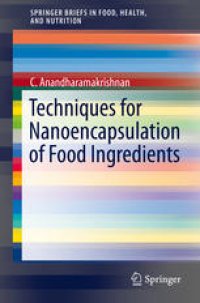
Ebook: Techniques for nanoencapsulation of food ingredients
Author: C. Anandharamakrishnan (auth.)
- Tags: Food Science, Nanochemistry, Nanotechnology and Microengineering
- Series: SpringerBriefs in food health and nutrition
- Year: 2014
- Publisher: Springer-Verlag New York
- City: New York
- Edition: 1
- Language: English
- pdf
Nanoencapsulation has the potential to improve human health through its capacity to both protect bioactive compounds and release them at a specific time and location into various substances, including food. Numerous nanoencapsulation technologies have emerged in recent years, each with its own advantages and disadvantages. The goal of this Brief is to discuss the various nanoencapsulation technologies, such as emulsification, coacervation, inclusion encapsulation, anti-solvent precipitation, nanoprecipitation, freeze drying, and spray drying, including their limitations. Recent safety and regulatory issues concerning the various nanoencapsulation technologies will also be covered.
Discusses various nanoencapsulation technologies, such as emulsification, coacervation, inclusion encapsulation, anti-solvent precipitation, nanoprecipitation, freeze drying, and spray drying, along with their limitations. Recent safety and regulatory issues concerning these technologies are also covered.